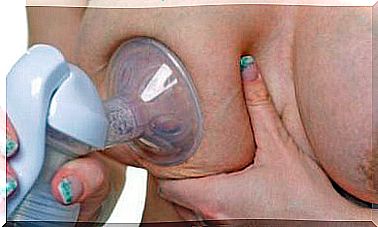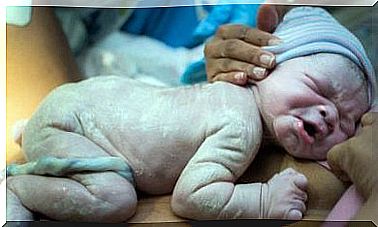Scarlet Fever In Children: All You Need To Know
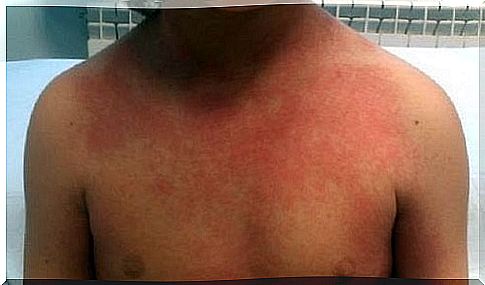
Children’s health is one of the things that worries parents most. Knowing the most common diseases, typical of the pediatric age, is important in order to be able to prevent and treat them in time. Scarlet fever is one of these.
What is scarlet fever?
Scarlet fever – also called scarlet fever – is an infection caused by a bacterium, a group A streptococcus, capable of producing a toxin to which some people may be sensitive.
It must be said that not all group A streptococci produce this toxin. And that not all individuals are sensitive to its effects. Scarlet fever typically affects children between the ages of 4 and 8. It is much less common in children under 2 years of age.
Causes of Scarlet Fever
Type A streptococci typically infect mucous membranes. This disease is transmitted through droplets of infected saliva that are released into the environment by coughing or sneezing
There are also other types of contagion, but they are less frequent. One of these is poorly washed foods, or toys and objects that babies carry in their mouths. We are talking about contagion by contact. Scarlet fever can also be transmitted through pus, but very few cases have been recorded.
Scarlet fever has an incubation period of one to three days. Incubation is the period of time from contracting the disease to when the first symptoms appear. During this time, the infected child can in turn infect other people.
One of the places that favor the transmission of scarlet fever is the school. The disease is generally more virulent in winter.
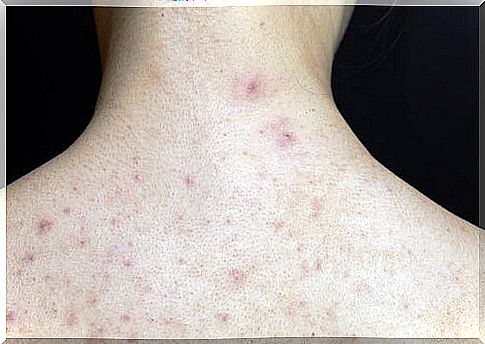
Symptoms of Scarlet Fever in Children
The manifestation of this infection occurs in two moments. The initial phase (also called the prodromal phase) can easily be confused with tonsillitis. The two diseases have very, very similar symptoms. In this phase, fever usually appears, which can be high and appear suddenly. In addition to fever, sore throats and headaches can occur. Vomiting is not a very common symptom, but it can occur at this stage. To these we must add abdominal pain and the feeling of tiredness.
The second stage of scarlet fever is that of the rash (also called rash ). It is the most characteristic symptom of scarlet fever and it is from here that the disease takes its name. It is a red (scarlet) rash that initially appears on the baby’s face and neck. It then expands to the rest of the body from top to bottom.
At first, the rash due to scarlet fever may look very similar to sunburn. By pressing on the part of the body affected by the rash, the skin tends to become clear. After that it becomes wrinkled again and small dots appear.
Another important feature is that the rash occurs mainly on the elbows and the back of the knees. Sometimes it is also found in the axillary area. This means that it typically appears in areas of the body that have creases. One of the peculiarities is that it does not occur in the area between the nose and the mouth. In addition to the rash, the tongue usually takes on a deep red color and the lymph nodes in the neck are swollen to the touch.
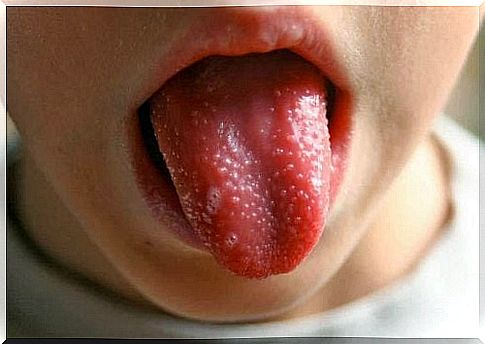
Once 5 days have passed from the moment of its appearance, the rash begins to disappear. After that, a peeling process begins, similar to what occurs when we burn ourselves. This process can take up to 8 weeks.
How is it diagnosed and what is the cure?
Except for visible symptoms, the most common method of diagnosing scarlet fever is to do a throat swab culture. This is a laboratory test that will detect scarlet fever instantly. In any case, to avoid infection it is important to keep children away from people or groups of children who have, or are suspected to have, scarlet fever.
The indicated cure for this pediatric disease is the administration of antibiotics. It is recommended to take penicillin or, in the absence of this, amoxicilin, for at least 6 days. Scarlet fever in children is a mild infection that appears less and less frequently. If treated in the right way, it shouldn’t cause parents any concern.








